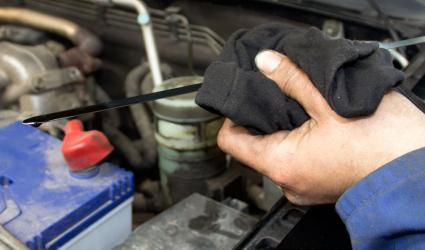Topping Up Your Engine Oil

Checking your oil is fast and easy, and could save you thousands of dollars! Oil is essential to keep your engine lubricated so it runs smoothly.
If your engine loses all its oil it will seize up and probably need to be fully replaced - a very expensive exercise.
It's not only old vehicles that are prone to using or losing oil. Even modern cars can have this problem due to their extra complexity.
Also, you can't rely on the 'check-oil' light on your dashboard to warn you that your oil needs to be topped up. By the time this light comes on, the engine is often already damaged!
We recommend you check your oil levels at least once a month, especially before any long distance trips, and have your vehicle serviced every six months with a full oil and oil-filter change.
Here's how to check your oil:
- Grab a few paper towels.
- Open the bonnet and look for the dip-stick. It should have a coloured ring-shaped handle to put your finger through so it's easy to remove.
- Remove the dip-stick and wipe clean with the paper towels. You should see two small holes near the tip; these mark the full and empty levels of your oil.
- Replace the dip-stick, making sure to push it all the way in, then pull it out again.
- Check the tip for oil. The oil should cling to the side of the stick and be fairly obvious where it stops. Don't take into account any small droplets of oil above this level.
- If the oil is below the halfway point between the level markers, consider topping up the oil with a litre, available from your service station or auto parts store.
If the oil is below the empty level marker, top up immediately with at least two litres of oil to prevent major damage!
Topping up your oil:
- On top of the engine you will find a cap with an image of an oil can or similar. Remove the cap and put it somewhere safe.
- open your oil container and pour as much as required into the engine. Don't worry if you spill a little bit.
- Replace the oil cap.


